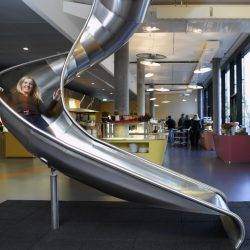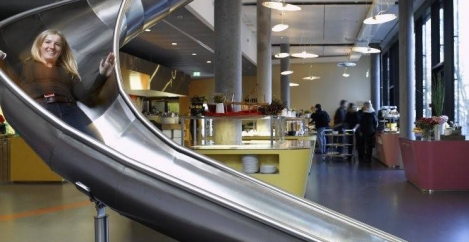October 5, 2017
The current approach to creative workplace design relies on faddish, ineffective ideas
 A new research paper published in the Journal of Management & Organization claims that while many organisations are focussed on creating workplaces that foster creativity, the results tend to ignore nuances about what makes people creative and instead focus on faddish ideas and playful, domestic design features to invoke ideas of creativity that may or may not be effective in practice. The study from Donatella De Paoli of the Department of Leadership and Organizational Behaviour, Norwegian Business School BI, Oslo and Arja Ropo of School of Management, University of Tampere concludes that organisations need to develop a more in depth understanding of creativity if they want to create creative workspaces.
A new research paper published in the Journal of Management & Organization claims that while many organisations are focussed on creating workplaces that foster creativity, the results tend to ignore nuances about what makes people creative and instead focus on faddish ideas and playful, domestic design features to invoke ideas of creativity that may or may not be effective in practice. The study from Donatella De Paoli of the Department of Leadership and Organizational Behaviour, Norwegian Business School BI, Oslo and Arja Ropo of School of Management, University of Tampere concludes that organisations need to develop a more in depth understanding of creativity if they want to create creative workspaces.
The researchers assessed 40 case studies of workspaces that had been designed ostensibly for creativity and contrasted them with the results of accepted theory and research into the creative process. It concludes that “the designs of ‘creative workspaces’ follow a rather standardized and deterministic assumption of what kind of spaces are considered to produce creativity: open offices, happy, playful communities of close-knit teams and spatial arrangements that resemble home, symbols and memories, sports, technology and nature. This view of creativity and workspaces remains a management fad unless a more balanced approach to the issue is assumed.”
As well as suggesting how a more nuanced and informed approach could achieve better results, the authors also suggest that people should be involved in the design process from the very beginning and not merely asked to inhabit them once they’re done, “as is now typically the case”.
Image: Google, Zurich













